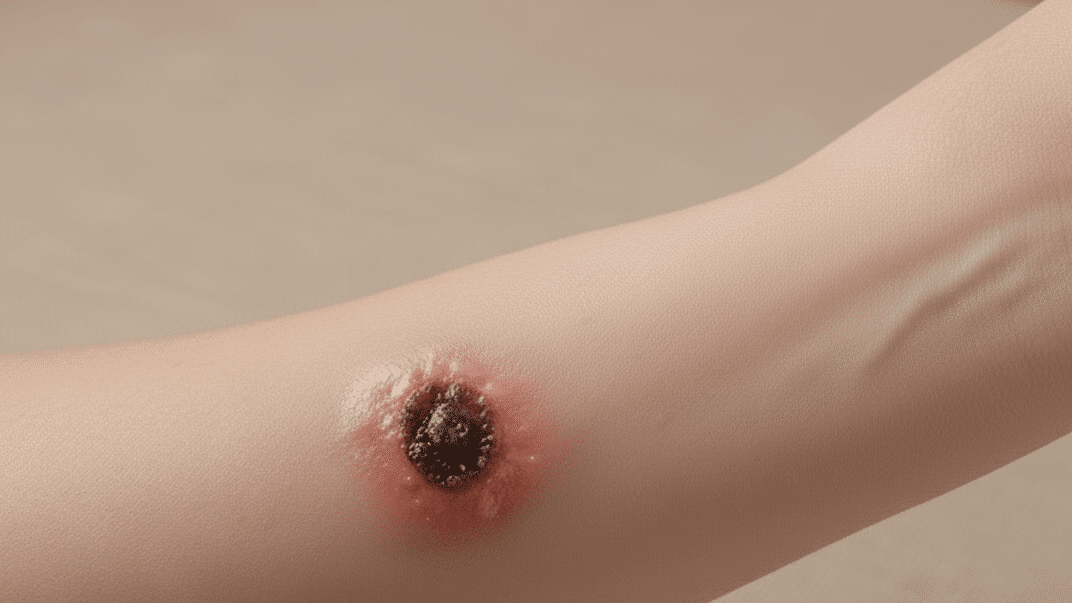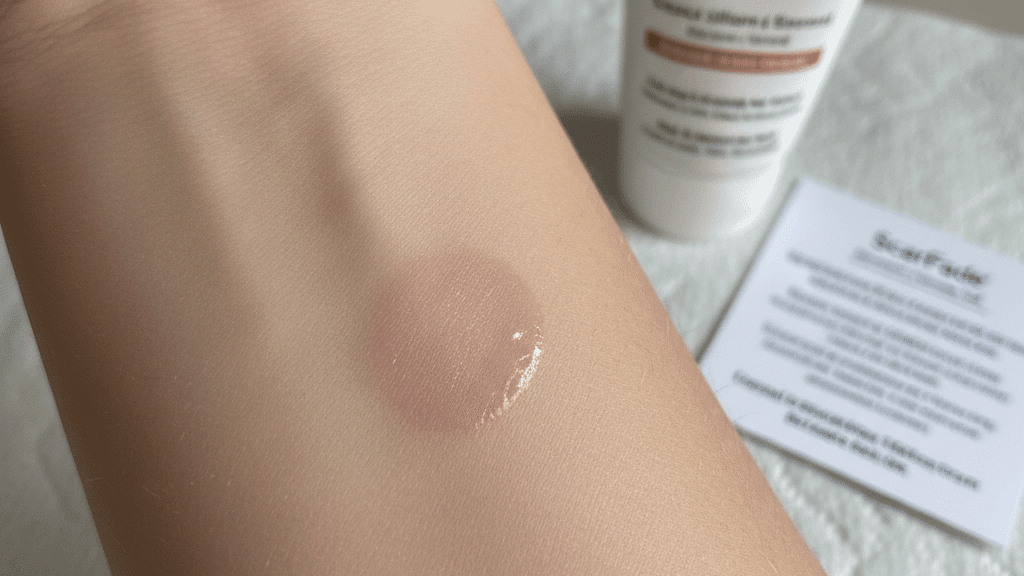Not every mole falls into the beauty mark category, unless you’re Marilyn Monroe.
Most procedures are safe, but the skin needs proper care afterward to heal well.
The process of recovery involves several mole removal healing stages, each contributing to restoring strength and smoothness to the treated area.
Ignoring aftercare can slow down recovery or cause irritation. With consistent care and attention, the skin regains comfort and balance faster.
This guide outlines the complete mole removal healing stages, essential aftercare steps, and signs to watch for to ensure healthy, scar-free healing.
How Does the Mole Removal Process Take Place?
Mole removal is a short and controlled procedure performed under local anesthesia to ensure comfort.
After numbing the area, the dermatologist evaluates the mole’s size, color, and depth to decide the best approach.
For surface-level moles, gentle trimming helps achieve a smooth result.
Deeper moles are completely excised, and the wound is closed with fine stitches to support proper healing.
Once the removal is complete, the site is cleaned, covered, and protected to begin recovery.
Mole Removal Healing Stages
Healing duration varies depending on whether the mole was removed by shaving, surgical excision, or laser.
Shallow removals typically heal within two weeks, while deeper procedures may take longer as stitches and tissue repair continue.
1. Immediate Phase: Day 0 to Day 2

During the first two days, the treated area often appears red, swollen, and slightly moist.
A light dressing protects it from bacteria and friction.
Keep the site clean using mild soap or saline solution if recommended.
Pat gently to dry without rubbing.
Mild tenderness or fluid drainage is normal as the mole removal healing stages begin and the body seals the wound to prevent infection.
2. Early Healing: Days 3 to 7

By this stage, a soft scab or crust forms, creating a natural barrier.
It may itch lightly as the tissue strengthens underneath, but scratching can disrupt healing and increase scarring.
Continue cleaning as advised by your doctor and apply prescribed ointments to keep the wound moist.
Redness should gradually reduce. Watch for signs of infection after mole removal, such as warmth or pus.
The mole removal healing stages at this point focus on stabilization and surface repair.
3. Intermediate Healing: Week 2 to Week 4

The scab usually falls off naturally, revealing pink, tender skin beneath.
This new skin may feel sensitive to touch and easily irritated by sunlight or clothing.
Apply sunscreen daily to prevent darkening, and use gentle moisturizers to maintain flexibility.
Avoid strong exfoliants or scented products during this phase.
Beneath the surface, collagen fibers strengthen the skin’s structure, marking a crucial point in the mole removal healing stages.
Deeper tissue begins to rebuild, and the healing of the mole removal scar gradually starts.
4. Long-Term Remodeling: Month 1 and Beyond

After the initial month, the skin continues refining itself as redness and firmness fade.
The area becomes smoother as scar tissue softens over time.
Using silicone gel or scar-reducing cream, as advised by your dermatologist, helps the new skin remain even in color and texture.
Most patients notice steady improvement as the mole removal healing stages complete and the skin returns to its natural balance.
Different Methods of Mole Removal
Dermatologists use several precise techniques to remove moles, each chosen based on the mole’s depth, size, and location.
| Method | How does it work? | Best For |
|---|---|---|
| Shave Removal | Mole surface is trimmed after numbing the area. | Raised or protruding moles. |
| Surgical Excision | Mole and the nearby tissue are fully removed, then stitched. | Deep or large moles. |
| Laser Treatment | Focused light breaks down the mole pigment. | Small, light-colored moles. |
| Cryotherapy | Liquid nitrogen freezes and removes mole tissue. | Benign moles with clear borders. |
| Electrocautery | Controlled heat removes the mole layer by layer. | Small, non-cancerous moles. |
What Not to Do After Mole Removal?
After mole removal, certain habits can delay healing.
Being mindful of these actions can also support later mole removal aftercare and maintain even skin tone.
- Don’t scratch or peel the scab: This can reopen the wound and increase the chance of visible scarring.
- Avoid applying makeup or harsh creams: Chemicals may irritate fresh skin and slow natural recovery progress significantly.
- Don’t expose the wound to sunlight: UV rays can darken healing skin and cause uneven pigmentation or redness.
- Avoid swimming or soaking in water: Prolonged moisture softens new tissue and increases bacterial infection risks.
- Don’t skip dermatologist follow-ups: Missed reviews may overlook hidden complications that interfere with healthy skin restoration.
Mole Removal AftercareTips

Aftercare is key to ensuring clean healing and minimizing scarring.
Following the right steps naturally supports all mole removal healing stages:
- Keep the area clean and protected: Clean gently with mild soap or saline twice daily, then pat dry to prevent bacterial buildup.
- Manage discomfort carefully and safely: Mild soreness can be eased using acetaminophen and cool compresses without applying direct ice.
- Support natural skin regeneration properly: Eat vitamin-rich foods, stay hydrated, and moisturize lightly after the wound closes completely.
- Avoid unnecessary friction or irritation: Wear loose clothing and avoid tight fabrics rubbing directly over the healing mole removal site.
- Follow proper mole removal aftercare routines: Good hygiene and patience encourage smooth recovery and consistent results over time.
Can Moles Regrow After Removal?
Yes, moles can regrow after removal, depending on how they were treated.
If pigment cells remain under the skin, especially after partial or shallow excision, the mole may return in the same spot.
Sometimes, new pigmentation during healing can mimic regrowth.
While this is often harmless, any changes in color, size, or texture should be checked by a dermatologist.
What The Community Says?
Community members who’ve undergone mole removal share real-world snippets that highlight the less-discussed aspects of the process.
Some insights gained from a reddit discussion asking about facial mole removal encapsulated:
- Scalpel removal lowers regrowth risk compared to surface laser methods.
- Short swelling and mild pain heal fast with little scarring.
- Careful cauterization helps avoid scars on delicate facial spots.
- Indented scars and regrowth of a mole show why a doctor’s advice matters.
Together, these experiences show that healing isn’t one-size-fits-all. The method, practitioner skill, and aftercare choices often shape how well the skin recovers.
When to Contact a Dermatologist?
Regular follow-up and timely consultation can prevent small issues from turning into major skin concerns.
Here’s when it’s important to reach out:
- Redness, swelling, or discharge lasts several days
- Soreness or thickened tissue develops
- Sudden color changes or delayed healing appear
Prompt attention ensures proper healing, reduces the chance of scarring, and keeps the surrounding skin healthy. A quick visit can make a big difference in maintaining smooth and even recovery.
Conclusion
The mole removal healing stages show how skin transitions from repair to restoration, reflecting the body’s natural resilience and rhythm.
Each completed stage builds confidence in the results and highlights the importance of mindful care.
Beyond physical healing, taking care of treated skin helps prevent new pigment spots, strengthens its barrier.
Maintaining a healthy lifestyle and staying properly hydrated also support collagen renewal and long-term smoothness.
How was your mole removal recovery?
Tell us what helped your skin heal best in the comments.
Frequently Asked Questions
Is Aquaphor or Vaseline Better for Mole Removal?
Aquaphor is better than Vaseline for mole removal because it contains healing ingredients like lanolin and panthenol that promote faster recovery while keeping the wound moist and protected from infection.
Do Bad Biopsy Results Come Back Quicker?
Bad biopsy results do not necessarily come back quicker, as turnaround time depends on lab workload, test complexity, and processing procedures rather than whether findings are benign or concerning.
Why Do Mole Biopsies Take So Long?
Mole biopsies take a long time because tissue samples require careful processing, staining, microscopic examination by pathologists, and sometimes additional specialized tests to ensure accurate cancer screening and diagnosis results.







